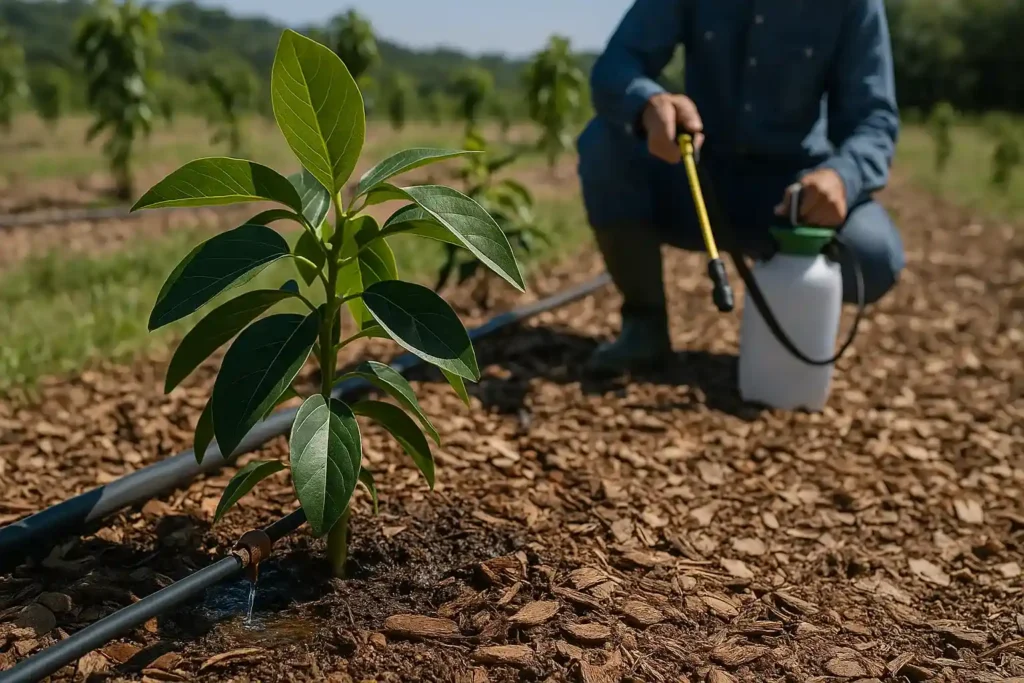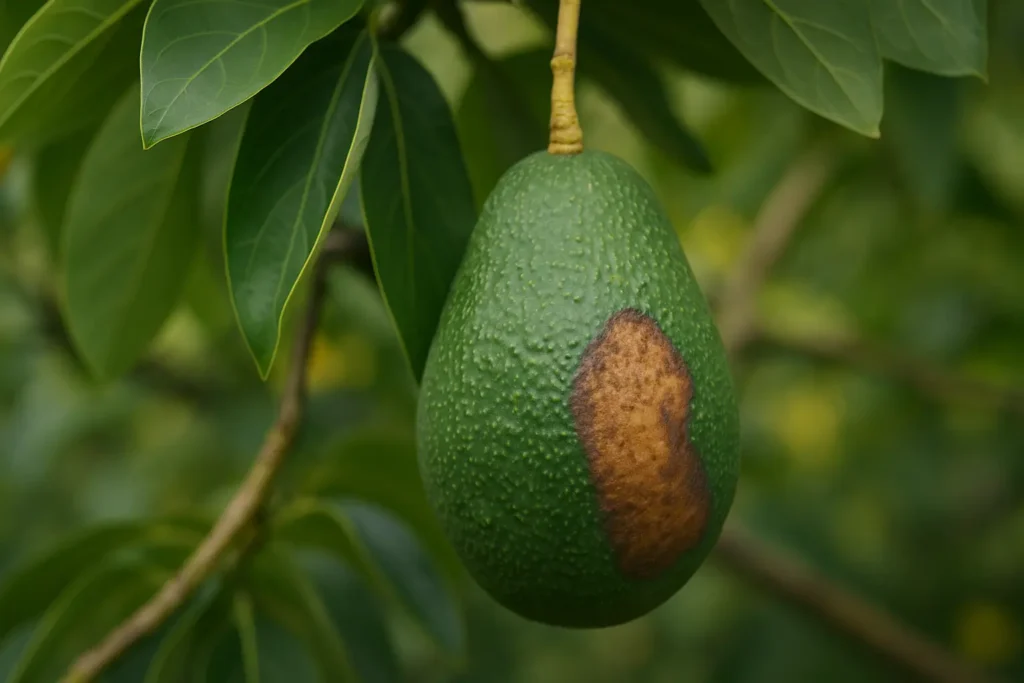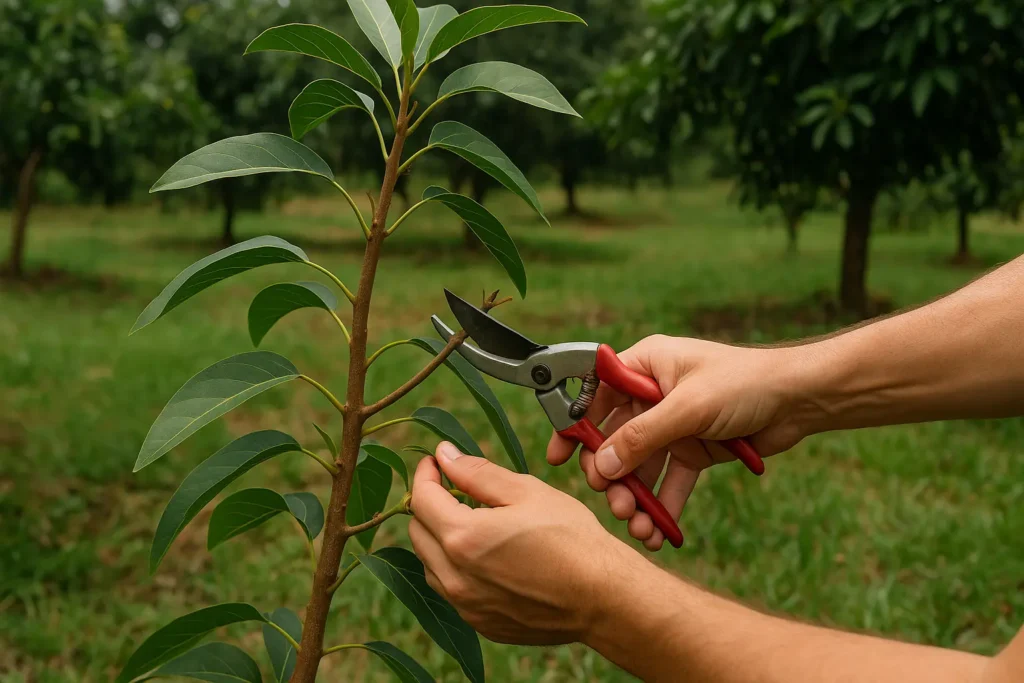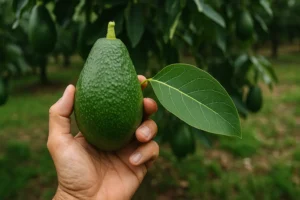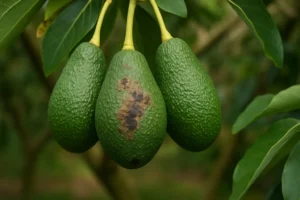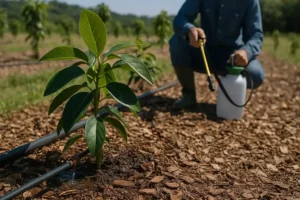Hass avocado cultivation has gained global recognition thanks to its exquisite flavour, high nutritional value and growing demand in international markets. However, producers face multiple challenges, including the presence of Hass avocado pests, which can affect both the health of the trees and the quality of the fruit.
In this article, we will explore the main pests affecting Hass avocado crops and the most effective strategies for their management and prevention.
What are Hass Avocado Pests?
Hass avocado pests are organisms, mainly insects and mites, that attack different parts of the tree and the fruit, causing damage to its development and affecting production. These pests can weaken the tree by feeding on its sap, perforate its branches and trunk, or deteriorate the quality of the fruit, which decreases its commercial value.
Depending on their nature, pests can act hidden inside the tree's wood, on the leaves, on the fruit or on the bark. For this reason, it is important to implement monitoring and control strategies to prevent their spread and reduce their effects on the harvest.
Hass Avocado Pests and How to Fight Them
Pests can compromise tree development and reduce crop yield. Below we detail the most common pests and the best strategies for their control.
1. Avocado borer
The avocado borer (Heilipus lauri) is one of the pests of the Hass avocado. It is a beetle whose larvae bore into trunks and branches, forming galleries that affect the transport of nutrients and weaken the tree. Its presence can be devastating if not detected in time.
Symptoms and damages
- Gummy exudations on the bark of the trunk.
- Wilting and premature fall of leaves and fruits.
- Progressive loss of tree vigor.
Control strategies
- Constant monitoring using traps and visual inspection of the trees.
- Sanitary pruning of affected branches to prevent spread.
- Application of systemic insecticides and biological to control their reproduction.
- Use of natural enemies, such as entomopathogenic fungi.
2. Avocado Thrips
Avocado thrips (Scirtothrips perseae) are tiny insects that attack the leaves and fruits, affecting photosynthesis and causing aesthetic damage to the Hass avocado.
Signs of infestation
- Leaves with silver and bronze spots.
- Deformations in new shoots.
- Scars on the skin of the fruit, affecting its commercial quality.
Control methods
- Introduction of natural predators, such as phytoseiid mites.
- Application of bioinsecticides and horticultural oils.
- Crop rotation to prevent the build-up of thrips populations.
- Removal of plant debris to reduce habitat.
3. Pink Cochineal
The pink cochineal (Nipaecoccus viridis) hides in protected areas of the tree, such as the axils of leaves and fruits, sucking the sap and weakening the plant.
Crop damage
- Production of molasses, promoting the growth of the sooty mold fungus.
- Loss of commercial quality of the fruit.
- Decrease in photosynthesis and general weakening of the tree.
Control strategies
- Release of parasitoid wasps for biological control.
- Application of mineral oils and potassium soaps.
- Practices of hygiene and agronomic management to prevent its spread.
4. Fruit Fly
The fruit fly (Ceratitis capitata) lays its eggs on the skin of the avocado, where the larvae feed on the pulp, causing rot and premature fall of the fruit.
Signs of infestation
- Small perforations in the skin of the avocado.
- Appearance of larvae inside the fruit.
- Loss in quality and marketability of the crop.
Control strategies
- Traps with pheromones and attractants for monitoring and capture.
- Application of Toxic baits and biopesticides.
- Integrated pest management, combining biological and cultural controls.
5. Mites
Mites, such as the glass mite (Oligonychus perseae) and the red mite (Tetranychus urticae), suck the sap from the leaves, reducing the photosynthetic capacity and weakening the tree.
Symptoms of infestation
- Yellow spots and cobwebs on the underside of leaves.
- Premature defoliation in severe infections.
- Reduction in fruit production and quality.
Control and prevention
- Application of selective acaricides.
- Introduction of natural enemies, such as phytoseiid mites.
- Maintaining a good irrigation, since mites thrive in dry conditions.
Controlling Hass avocado pests is a challenge that requires comprehensive strategies and constant monitoring. Prevention and timely intervention are essential to ensure healthy and profitable harvests. With proper practices and efficient management, it is possible to minimize damage and maximize the yield of this valuable crop.
Guarantee the Quality of your Hass Avocado!
The Hass Avocado from At Fruty Green It is carefully cultivated to ensure its quality and resistance to Hass avocado pests. It is grown under the highest quality standards, ensuring a fresh and healthy product that meets the demands of the international market. We have the best control and prevention strategies to ensure healthy harvests and fruits of the highest quality.



